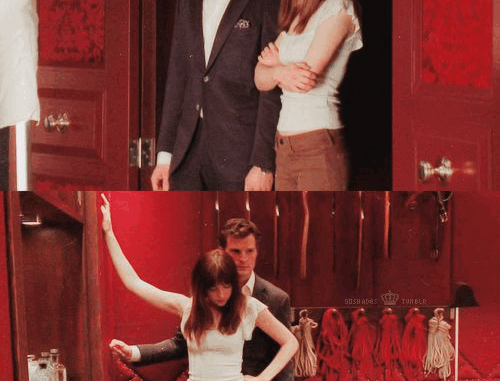
To most viewers, the Red Room scene in Fifty Shades of Grey was unforgettable—shocking, seductive, and intense. But what very few people know is that the night before it was filmed, Jamie Dornan was on the verge of walking off the set entirely.
The scene was meant to be the heart of Christian Grey’s character—his world of dominance, power, and secrets. But Jamie Dornan, already struggling with the pressure of embodying the enigmatic billionaire, felt the script lacked the emotional core needed to ground the shocking visuals. According to a crew member who worked closely on the film, “Jamie was in his trailer for nearly an hour, refusing to come out. He kept saying, ‘This isn’t who he is—this is just the surface.’”
Behind closed doors, Dornan had already been battling with how Christian’s trauma was being handled. He wanted to portray a character who wasn’t just controlling in the bedroom, but who was deeply conflicted, vulnerable, and haunted by his past. But the script, at that point, leaned heavily into stylized erotica with very little exploration of emotional consequence. Dornan, a father in real life and a thoughtful actor, reportedly told the director, “You can’t play this without giving him a soul.”

The breaking point came when he read the version of the Red Room scene where Christian remains cold and robotic throughout, treating Ana as merely a submissive object. Dornan refused. He demanded the scene be rewritten—or at least reimagined—to include a moment of hesitation, something to show Christian’s inner conflict.
Surprisingly, the director agreed to let Dornan try it his way. They rehearsed a different version, where Christian delivers a subtle line—”This is who I am, not who I want to be”—just before Ana enters the room. It was a small but powerful addition. And in that moment, Dornan believed they had finally captured the broken man behind the dominant image.
But the studio had other ideas. The alternate scene was filmed but never used. Executives believed it would “complicate the fantasy” and shift the tone. The line was cut. The vulnerable moment removed. What fans saw instead was a more polished, more controlled Christian—what the studio believed audiences wanted.
To this day, Dornan has never publicly acknowledged the version he fought for. But multiple crew members confirmed its existence. One called it “the best performance Jamie ever gave during the trilogy,” while another said, “That’s the Christian Grey I wish the world had seen.”
In the end, Dornan didn’t quit. But the memory of that near-departure lingers behind the film’s glossy surface. It’s a reminder that behind every seductive scene, there may be a battle no one sees—a fight for truth, depth, and the human story beneath the fantasy.
